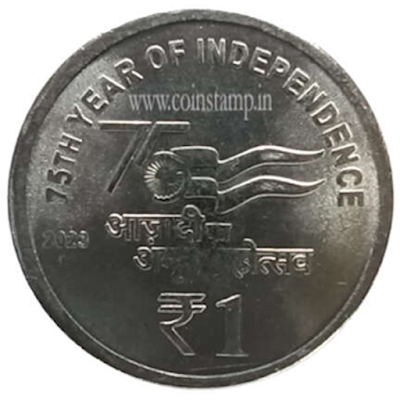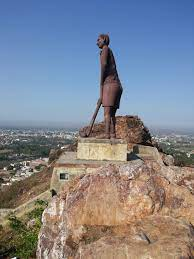The History of Indian coinage
In the ancient world, money was not used as the medium of exchange. The barter system was used for trade.
A good or service was exchanged for another good or service. For example, a cow could be sold in exchange for 12 hens. However, a problem arose. What would the cow seller do if he was offered only 6 hens? He could not sell half of his cow!
Eventually, cowries shells came to be used all over the world as shell money. Cowries are the small, shiny and smooth porcelain-like egg-shaped shells of slow-moving sea snails.
Empty cowrie shells are abundant in the Indian Ocean.These were washed ashore and collected in the Maldive islands, Sri Lanka, Indian Malabar Coast, Borneo and other East Asian islands, Maluku and the African coast. Long, long ago, these cowrie shells were used as shell money for trade transactions in Africa, South Asia and East Asia.
Cowrie or kaudi was the currency used in trade transactions in ancient India. It was used even in the 19th century in the eastern parts of India, viz. Bengal and Odisha. Phootie cowries referred to split cowries.
Ancient Indian Coinage system:
3 phootie cowries = 1 cowrie
10 cowries = 1 damri
2 damris = 1 dhela
1 dhela = 1.5 pie
3 pies = 1 paisa
4 paisa = 1 anna
16 annas = 1 rupaya
256 damris = 192 pie = 128dhelas = 64 paisa (old) =16annas = 1 rupaya
There is no consensus amongst historians about whether the terracotta seals found in Mohenjodaro and Harappa sites were actually the first coins of ancient India. The first punch-marked coins (silver) were possibly minted in the 6th century B.C. Known as aahat coins, these were produced in the kingdoms of the Mahajanapadas of the Indo Gangetic plain, from the 6th to 2nd century B.C. There were 16 kingdoms in the Mahajanapadas. Puranas, Karshapanas and Panas were the minted punch marked coins (PMCs). These silver coins were made in all shapes, viz. round, oval, square, rectangular, etc. The various kingdoms in the Mahajanapadas had different types of inscriptions, e.g., human figures,flower, plant and tree motifs; geometrical designs, etc. Thus, Dakshin Panchala had a swastika punched on the coins, while Saurashtra had a humped bull.
By the 3rd century BC, Mahajanapada acquired control over many small kingdoms. Due to the extension of this vast Mauryan empire, the Mauryan coins came to be used as the currency of the Indian subcontinent. Nishka was the name given to the gold coin of the Mauryans.
Dynastic coins in Ancient India: The Indo-Greek kings ruled North and North-western India from the 2nd century BC to the 1st century CE. They introduced a new coinage system consisting of gold, silver, copper and nickel coins. A portrait of the ruler was on the obverse side of the coin and the Greek deity on the reverse side, along with Indian religious symbols.
In the Kushan empire (1st century CE to 4th century CE), the coins were made of gold. Emperor Kanishka is regarded as a great king of ancient India. Coins made of gold and copper were found in his kingdom. He was a Buddhist and there were coins with a standing Buddha, Shakyamuni Buddha and Maitreya Buddha engraved on them. Figures of various Gods and Goddesses on the Kushan coins show the tolerance this Emperor had for all religions.
The largest number of gold coins were found in the Gupta empire(early 4th century CE to late 6th century CE). These were known as dinars. There were also silver coins, but coins made of other metals were rare. This abundance of gold coins was due to the thriving trade on the silk route. Therefore, the Gupta rule was called the Golden Age of Ancient India.The deities on the coins were Indian and the legends were in Brahmi. Coins were of various types - King and Queen type of Chandragupta I (Lichchavi type), Aswamedha (Horse type), King playing the veena (Lyrist type), King wielding battle-axe, sword,etc. (Battle- Axe type). The post Gupta coinage had images of a seated Goddess Lakshmi and of a horse/bull.
In the Mughal Empire, broad, thin, silver coins called sharukhis were issued during the reign of Emperor Babur. These were also issued by Emperor Humayun and Emperor Akbar. Emperor Humayun was sent into exile to Persia by an Afghan lord, Sher Shah Suri, in 1540. The Suri dynasty now replaced the Mughal empire from 1540 to 1556. Sher Shah Suri issued a new silver coin, the rupaiya, and a copper coin, the paisa. The rupaiya eventually became our modern Indian rupee. With the help of the Persians, Humayu regained control over Indian territories 15 years after he was overthrown by Sher Shah Suri. Thus began the second reign by the Mughals. The silver rupee in the Mughal empire was an adaptation of Emperor Sher Shah Suri’s rupaiya. The Afghan ruler’s dam also came to be used as the Mughal period copper currency. The standard gold currency during the Mughal period was the mohur (ashraf). This too was first introduced during the Suri empire.
Mohur Mughal era coins had Persian legends and Kalima (Islamic religious messages) engraved in Arabic. Emperor Akbar’s religious beliefs were put on coins during his reign. Kalima coins were later banned by Emperor Aurangazeb as he felt they went against the teachings of Islam. Mughal coins were also issued by regional powers in Awadh, Hyderabad and Rohilkhand, and even by the enemies of the Mughals, viz. the Marathas, Sikhs, Rajputs, as well as the French and the British!
In the South Indian coinage system, dynastic crests were engraved on the coins viz. boars (Chalukya dynasty), bull (Pallava dynasty), tiger (Chola dynasty), etc. Ancient India had a thriving silk route trade and maritime trade with the Middle East,Greece, Rome and China. Roman coins were used in South India due to the thriving maritime trade. Sometimes the engraving of the Roman monarch was slashed to show that he was not the ruler of their kingdom in South India! Even Chinese coins were used in South India. India had close relations with China through trade and cultural activities. Coins were round with a square in the center. Ancient Chinese believed that Earth was a square and Heaven was round!

Uniform coinage was introduced in India by the British in 1835. Coins were issued in the name of the East India Company. Initially coins had the image of William III, but by 1840, coins had the profile of Queen Victoria. From 1947-1950, Indian currency had images of British monarchs. This was the transition period for Indian coinage. The first coinage system of free India was issued on August 15th, 1950. The British monarchs’ portrait was then replaced by the Lion Capitol of Ashoka (official emblem of India). Coins issued after 1950 were 50paise, 25paise, 10paise, 2paise, 1rupee, 10rupees, etc.
Metals used to mint the coins were nickel, bronze, ferritic stainless steel, bimetallic cupro-nickel, aluminium-bronze, aluminium-magnesium, nickel-brass, etc. Coin shapes were circular, hexagonal, square and 8-scalloped. After independence, paper currency too, which was first introduced in India during the last half of the 18th century, came into use extensively.
Do you know?
* Rupee symbol as we know it, was introduced in 2010. The government held an open competition to select the rupee symbol, which was won by D Udaya Kumar, an Indian academic and designer from Tamil Nadu.
* Sterling is the world's oldest currency that is still in use and that has been in continuous use since its inception. It is currently the fourth most-traded currency in the foreign exchange market, after the United States dollar, the euro, and the Japanese yen.
* Queen Elizabeth II is the most featured person on coins and bank-notes.
* Currently, Indian coins are minted in four locations in the country - Mumbai, Noida, Hyderabad and Kolkata. Each coin has a unique shape right below the year that helps identify which city it was minted in. Mumbai represented by a diamond, Noida by a dot, Hyderabad by a star, and Kolkata mint has no mark at all.
* Tossing a coin to determine between two possible outcomes started in the time of Emperor Julius Caesar. Romans called this game of chance navia aut caput (“shipor head”), referring to the image of a ship’s prow on one side of the coin and the emperor’s head on the other. In ancient Rome, the emperor’s word was law, so if a coin landed heads up, you had to respect the will of the emperor and carry out the action decided for that side. In Britain, the practice was called cross and pile, taking its name from the indentation from the hammer used to press the metal as the coin was struck.
* The first US coin ‘Fugio’ had the motto ‘mind your business’.
* India’s highest currency denomination was the Rs. 10000 note.
* Sailors are a superstitious lot, and favour traditions and ceremonies that bring good luck when building a new ship. One of these is the coin ceremony, whereby mariners place one or two coins under the keel block of the new ship to bring good luck. The tradition dates back to Roman times, when coins attached to ships were said to provide divine protection.






















